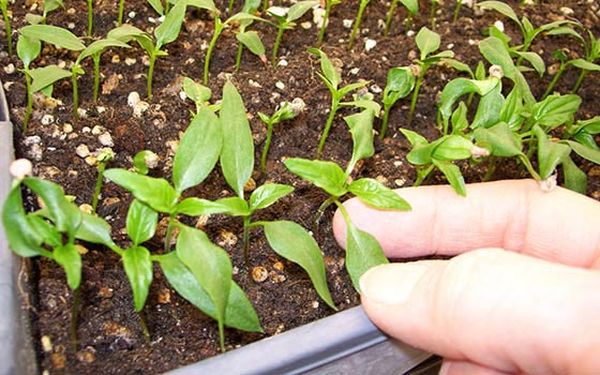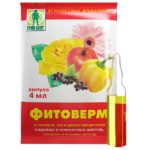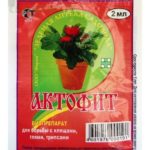The work of the gardener is full of surprises. Nature throws them - frost, heat, torrential rains. Seed suppliers do their bit by selling substandard seed. But most of all life is spoiled by pests of garden plants. There are several reasons why aphids and other pests appear on the seedlings of pepper and have to fight them.
At defeat by wreckers the top leaves can turn white, be curtailed or twisted in a boat. To get rid of and destroy pests, you need to treat the leaflet with the means described in the article.
Table of contents
The main reasons why the leaves of the pepper seedlings are curled or rolled in a boat
Twisted leaves - a picture that a gardener observes when growing a pepper, leads to despondency. Even an experienced vegetable grower has a question: why do the seedlings curl leaves?
Symptoms of nutritional deficiencies
Twisted leaves of pepper - a signal of phosphorus deficiencyif the following symptoms are observed:
- the leaves turn blue first, then their shade turns purple;
- thinning and may turn white stem;
- buds are not formed on time;
- roots of seedlings are covered with a touch of rust.
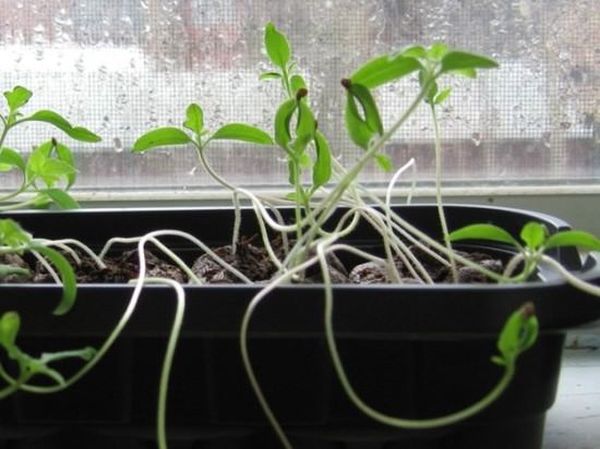
Spider mite
Spider mite is a small parasite (1-2 mm), parasitic on the back side of the leaf. It is hard to see and you can learn about the infection by the presence of a web.
Aphid
Aphids on seedlings pepper - a serious threat to the harvest. In the absence of a fight, the colonies of the bug grow and can ruin a plant. The pest not only weakens seedlings of pepper, sucking the juice. It is a carrier of viruses. Putting away the fight with her is not worth it.
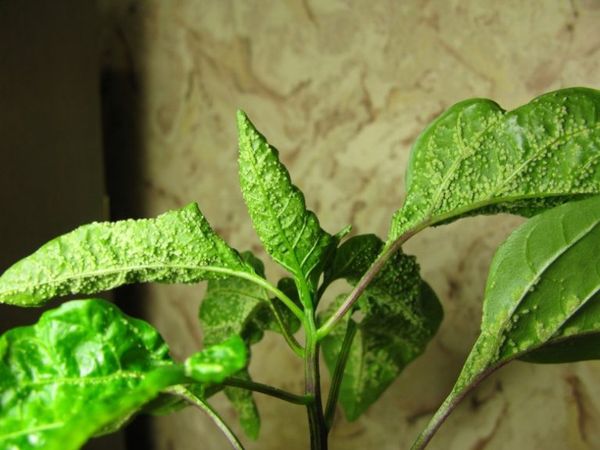
Wrong care for seedlings
Quite often, improper care results in twisting the leaves:
- poor quality primer;
- excessive watering;
- overdose of fertilizers.
Viral diseases
Viral diseases of pepper not treated, land it will not work. Plants are simply destroyed. Weakened seedlings are affected by tobacco mosaic virus. In addition to twisting and deforming the leaves, there is a change in color up to black shades.
The sheet plate gets spotty coloring. For seedlings infected with tobacco mosaic, the presence of chlorotic yellowness at the edges of the leaves is characteristic. Phytoplasmosis affects peppers less frequently. His symptoms are:
- yellowing leaves;
- twisting leaves up;
- deformed sheet plates.
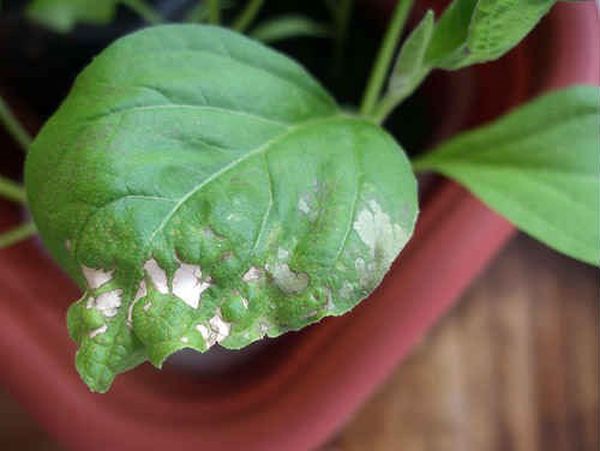
Why leaves can grow white on seedlings
Let us see why leaves can turn white in a seedling material. As usual, there are several reasons. The most common reason is burn. Moreover, various factors can cause a burn:
- watering pepper by sprinkling in sunny weather;
- an aqueous solution of fertilizer got on the sheet;
- overcooling at night;
- weak, unhardened seedlings, carried to the sun and she received a sunburn.
Perhaps white spots on the leaves of pepper - aphid signal. The running form is accompanied not only by white spots, but also by yellowing, the twisting of the leaves down, their premature fall.
If the spots on the leaves are off-white and around the perimeter are surrounded by a dark border - this septoria. It is caused by a fungus.
The fungus infects the leafy plates first, then the stem, then the fruits.
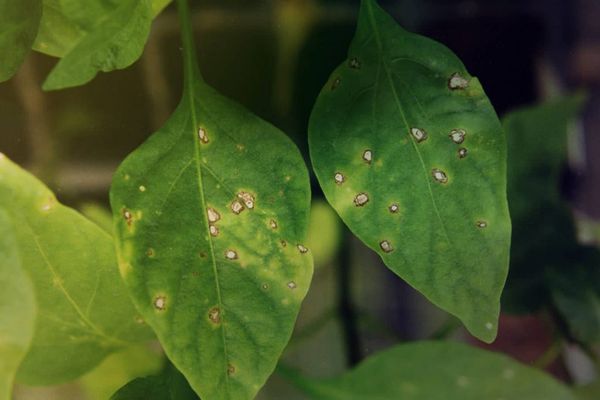
Aphids on pepper seedlings
Aphid is a transparent small insect (0.3-0.8 mm). Parasitic on indoor flowers, vegetable and garden crops, sucking the juice from the leaves, petioles, stems.
There are many kinds of it (3500), almost all polyphages.There are monophagous species that parasitize plants of the same species, but they are smaller. He lives in colonies.
The first sign that the plant appeared aphid - scurrying on the stalk ants. They are lovers of the sweet liquid that the bug allocates to the surface of the plant. If the leaves began to curl, you need to inspect the back side. Aphids and its larvae are clearly visible.
Females are winged aphids, they migrate from plant to plant, laying eggs. During the summer one individual makes up to 10 clutches. Last laying autumn. Eggs overwinter. In the spring begins a new cycle of reproduction.
Pepper seed material can suffer from several types of aphids:
- green;
- mealy;
- room
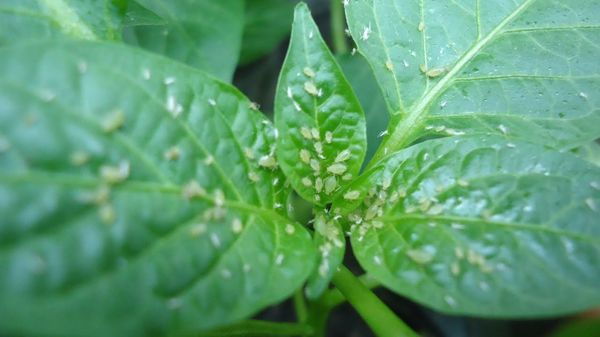
Infection can occur in different ways:
- From the sick indoor (greenhouse) plants.
- For planting used infected larvae (eggs) aphids priming.
- Flight form aphid flew in the greenhouse, in the window, on the loggia and settled on the plant.
What to do, how to fight and what means to use
Methods of dealing with aphids are different. Each gardener chooses his own.All methods can be divided into two types. The first option - the popular methods of struggle with the use of natural ingredients. The second option is chemical preparations (insecticides).
Folk ways how to remove the pest
Folk ways is preferable. But they are effective in the initial stages of combating the scourge, when the number of the pest is not great and the plant has the strength to recover.
The easiest way - wash the plant with water or soapy water to remove the bug. It is effective when the aphid colony is small. To prepare the solution, you can use laundry soap 72%. You can nastrogat him with a knife or grate. A tablespoon with a slide per liter of water will suffice. Some gardeners prefer to spray seedlings with soapy water.
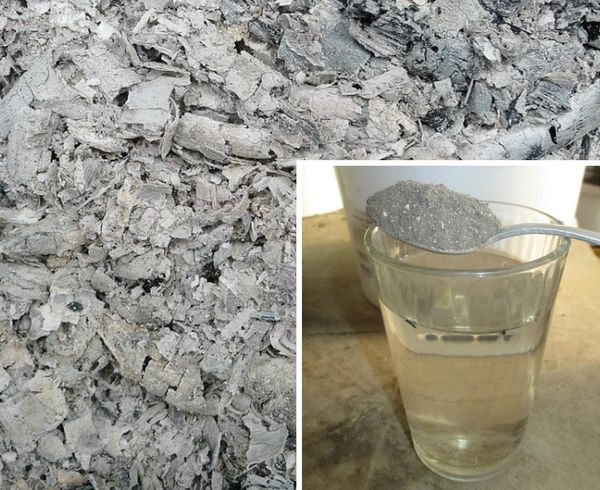
The second most common method - spray with a decoction of ash. Ash sown, poured water, boil. Before use, defend. The amount of ash 300 g is enough for 10 liters of water. On 1 liter respectively 30 g. Liquid or planed soap is added to the finished broth.
Bitter pepper infusion (100 g per liter) is no less effective for aphids. Need to insist within 2 days.Spray pepper seedlings at intervals of several days 3-4 times.
Regular washing will not allow the colony to grow. Seedlings during this period to feed. Strong plant suffers less from aphids.
Chemical processing
First thing you need read the instructions carefullyby choosing a drug to combat aphids. Suitable tools that can be used indoors (apartments, greenhouses).
When growing well to have on hand drugs:
- Fitaverm.
- Actofit.
- Fitoverm
- Actofit
Fitaverm - biological product. It can be used to combat aphids in the apartment and in the greenhouse. With it, you can cultivate the land before planting. Preventing infection is easier than fighting a pest.
Actofit gives effect for 2 days. It can also be used indoors, observing individual protection measures.
The best way to combat aphids is prevention. It is better to spend time on competent care, use quality land. Provide seedlings with backlighting, fertilizing, proper watering.Regular inspections will identify the pest at an early stage and do popular folk control methods.
